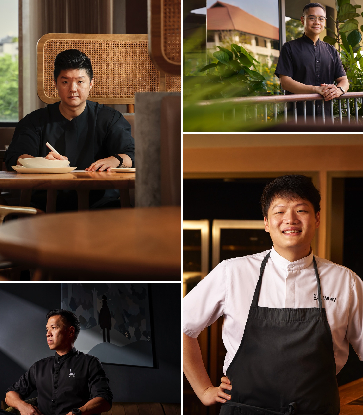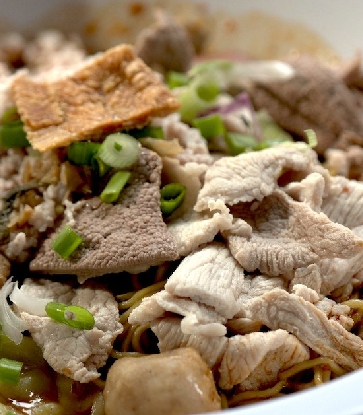Thailand may be known as a nation with a strong rice tradition. However, since one of our most famous dishes is Phad Thai noodles, it's no surprise that Thais consume a substantial amount of noodles, no less than other Asian countries. The next time you want to switch things up from the usual Phad Thai, consider opting for a fabulous alternative that could easily become your new favourite Thai dish—Phad See Ew.
You might have seen it written as Pad See Ew, Pad See-Ew, or Phad See Ew but they all describe the same dish. No matter the spelling, it is a must-try. This dish's roots lead back to China, where the art of stir-frying noodles was born and eventually found its way to Thailand. It's aromatic. The noodles, thick, slick, and silky, caress your taste buds with a sensuous touch—the light and dark soy sauce dance together perfectly as they coat each noodle like a warm embrace. The wok hay aroma lingers on your palate like a lover's lingering kiss. What's to love about it is that it's not pretending to be anything other than what it is — a truly delicious dish.

Phad See Ew, or ผัดซีอิ๊ว in Thai, translating to "fried with soy sauce", features wide, flat rice noodles wok-tossed with soy sauce. The magic unfolds in the sizzling wok, with black soy sauce adding caramelisation and smoky charm for that signature flavour. It may seem a bit charred, but that's the secret to its sensational essence.
This Chinese-Thai dish has counterparts in various other nations. It closely resembles Malaysia, Singapore's Char Kway Teow, and Cantonese Chow Fun.
“Personally, this is a dish for a true connoisseur and a testament to the skills of a high-level chef. This is because a top-quality Phad See Ew, from the noodles to the chicken eggs, must be stir-fried until it has that fragrant wok aroma, paired with high-quality marinated pork and Chinese broccoli. Hence, the chef must prepare with expertise using a Chinese wok over high heat. Dish after dish, only then can it be a Phad See Ew of exceptional restaurant-grade quality,” said Peerapong Benjarungroj, the third-generation owner of Sanyod (Sathon-Bang Rak), a Bib Gourmand Cantonese restaurant famous for its Phad See Ew and its sister version covered in gravy called “Rad Na”. It is so popular that they now have over 10 branches all over the Thai capital.
Need help figuring out where to start? The Cantonese master generously shares the Phad See Ew recipe from his restaurant for you to enjoy at home!

Phad See Ew (1 serving)
Ingredients:- 120 grams, flat rice noodles (or rice noodle of choice)
- 100 grams, marinated pork (or protein of choice)
- 1 chicken egg
- 60 grams, Chinese broccoli
- 1 teaspoon, light soy sauce
- 2 tablespoons, oyster sauce
- ½ teaspoon, white pepper
- 1 teaspoon, sugar
- ½ teaspoon, salt
- ½ teaspoon, dark soy sauce
- Vegetable oil (or other cooking oil)
- Water
How to prepare:
- Turn on the stove to medium heat and place the pan on it to heat.
- Prepare a pot of water for blanching the vegetables.
- Once the pan is hot, add a moderate amount of vegetable oil.
- Crack the chicken egg into the pan and stir-fry until it's fluffy, then add the wide noodles and stir-fry until they become fragrant.
- Boil the pork and Chinese broccoli in the boiling pot.
- Drain the water from the pork and vegetables and add them to the pan along with the wide noodles.
- Season and taste as you cook, ensuring that the seasonings mix well and have a fragrant aroma.
- Plate the dish and serve.

















